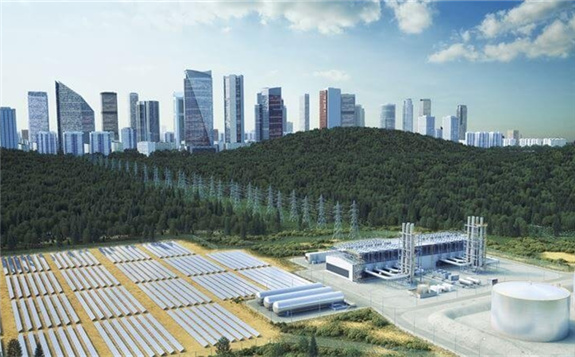Hydrogen technology is among an unprecedented range of engine and fuel gas supply systems that Wärtsilä is developing to help ship owners navigate the route to reduced greenhouse gas emissions.

As shipping seeks to drastically cut emissions, which fuels it will use to do so are far from clear. For 100 years the marine fuel market has been dominated almost entirely by oil. Now a diverse palette of potential clean fuel is emerging.
The viability of many new fuels depends on overcoming many challenges over the next 10 to 20 years. But the urgency of shipping’s decarbonisation ambition – notably, the International Maritime Organization’s aim to cut total greenhouse gas emissions at least in half by 2050 – means there is no time to wait for the ideal solution. The answer lies in flexibility, says Mikael Wideskog, General Manager, Technology Strategy & Innovation, Wärtsilä Marine.
“There are uncertainties around every prospective fuel, including when and where they will be available and at what price. Building fuel flexibility into new vessels – and, where appropriate, retrofitting flexible powerplant in older vessels – offers a hedge against these risks.”
No energy converter is more flexible than the internal combustion engine. With a limited exchange of components, today’s marine engines can burn any of the clean fuels expected to become available over the coming years.
Storage, handling and fuel supply can be more complicated given the properties of new fuels, but the challenges are manageable, especially if vessels are built with future conversions in mind.
To power shipping regardless of fuel choices, Wärtsilä is investigating all new fuels, including hydrogen.
The technology company already has a strong understanding of hydrogen and its dual-fuel engines and spark-ignited gas engines can already run on a fuel mix comprising up to 15-25% hydrogen, highlighting further the flexibility of dual-fuel engines. But the company believes that hydrogen has limited potential as a fuel in shipping.
“Onboard storage in the quantities needed for deep-sea shipping is more feasible for ammonia and methanol than for hydrogen,” said Wideskog.
“We see some niche applications for hydrogen as there are some national interests pushing this fuel, and strict local regulations may make it feasible for some short-sea shipping. But the main role of hydrogen in shipping will be as a building block for other fuels.”
Wärtsilä first tried using hydrogen in its gas engines in 2015 and is now continuing development towards a pure hydrogen engine.
Following a sprint last year at which Wärtsilä’s experts brainstormed engine concepts, using hydrogen in both Diesel and Otto-cycle engines.
The projects are now being analysed with a view to proceeding to engine tests. But fuel storage and supply remain a challenge for hydrogen due to its low volumetric energy density – liquefied hydrogen has around a third of the energy of LNG per cubic metre, meaning tanks need to be nearly twice the size – as well as its explosive and corrosive nature.